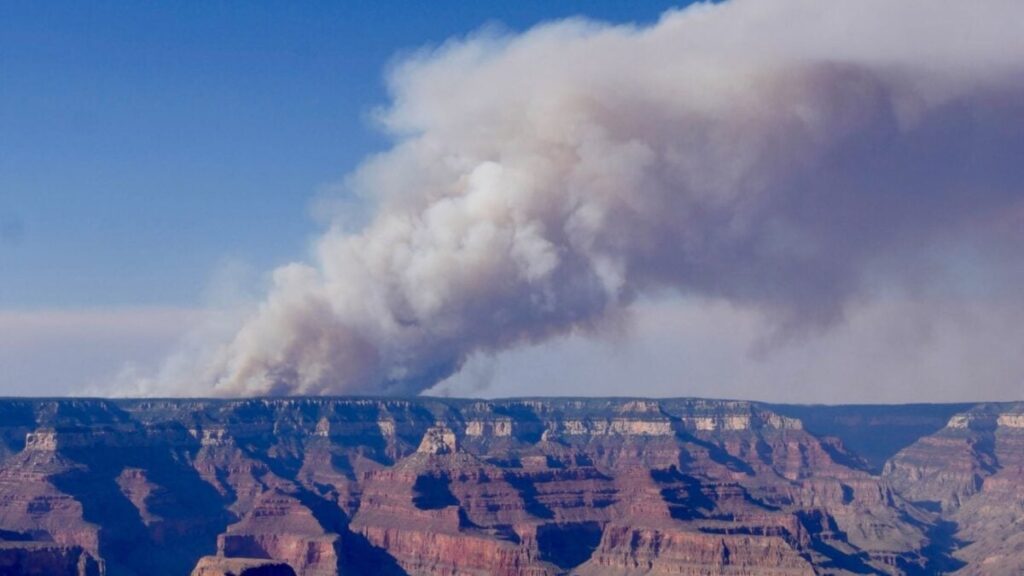Despite over a month of firefighting efforts, the Dragon Bravo fire experienced a surge of growth this week, doubling in size within just a few days. The northern Arizona “megafire” is now the largest active blaze in the continental U.S. and the largest of 2025 so far.
As of Wednesday, August 6, the Dragon Bravo fire has torched 130,520 acres along the Grand Canyon’s North Rim, according to the national wildfire monitoring database InciWeb. This fire sparked to life when lightning struck the area on July 4. National Park Service responders initially tried to manage the Dragon Bravo Fire with a confine-and-contain strategy, but it quickly grew out of control. This week, dry heat and gusty winds stoked another surge of rapid growth, challenging crews already struggling to control the blaze across rough terrain. According to a Wednesday InciWeb update, they have only managed to contain 13% of the fire.
The fire was pushing north on Tuesday, August 5, and crews deployed ground and air resources to minimize the growth of this new front. This strategy should drive the inferno into territory where it will quickly run out of fuel, according to the InciWeb update, but high heat and low humidity will continue to stoke the flames through Friday. To make matters worse, the fire is burning so hot that it’s generating weather that could help it spread more rapidly.
On Thursday, July 31, fire information officer Lisa Jennings told the Associated Press that towering “pyrocumulus” clouds had been hanging over the inferno for a week straight. These enormous, anvil-shaped convection clouds form when air over the fire becomes superheated and rises in a large smoke column.
If there is sufficient water vapor in the atmosphere and the updraft intensifies, pyrocumulous clouds can develop into pyrocumulonimbus clouds, according to the Royal Meteorological Society. These clouds may produce intense localized rain, which would help to dampen the fire, or create downdrafts that spread embers far and wide. They can also generate dangerous fire tornadoes.
The Dragon Bravo fire has already destroyed dozens of structures—including the historic Grand Canyon Lodge—triggered evacuations, and forced officials to close the North Rim for the remainder of the 2025 season, according to the National Park Service. There have been no reports of fatalities or damages. Dragon Bravo is currently one of four large, active wildfires in Arizona and one of 42 burning across the U.S., the National Interagency Fire Center reported Wednesday.
With wildfire season in full swing, federal agencies that fight wildfires are navigating devastating staff cuts. Under the Trump administration, the Park Service has lost 24% of its permanent workforce, according to the National Parks Conservation Association. A recent ProPublica investigation found that over one-fourth of the Forest Service’s firefighting jobs were vacant as of July 17. The agency has publicly maintained that it has sufficient staff and resources to handle what’s already shaping up to be an active season, but in July, more than a dozen active and retired Forest Service employees told Reuters the agency was struggling to fill vacancies.
Climate change is exacerbating the extreme weather conditions fueling the relentless Dragon Bravo fire, worsening wildfire activity on a global scale. This inferno underscores the risks of weakening U.S. firefighting capacity while failing to reduce planet-warming emissions. At this rate, severe, unmanageable fires like Dragon Bravo are quickly becoming the new norm.

